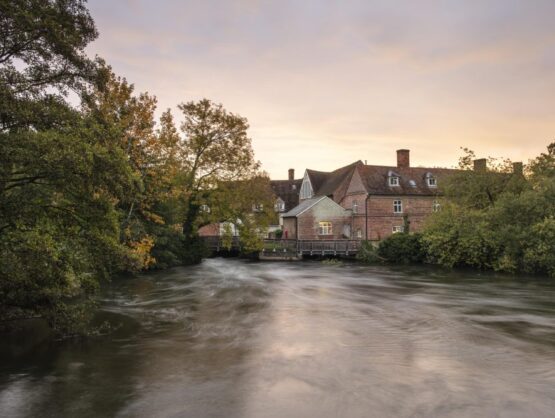The River Stour

The renowned artist, John Constable (1776-1837), spent much of his childhood at Flatford Mill and the Dedham Vale, both of which were later vividly portrayed in his paintings, arguably most famously in The Hay Wain.
The river itself was a source of great inspiration and featured in many of his works both in the background and as a main subject, especially when depicting its working life as the River Stour Navigation.
Constable captured a detailed landscape of the Navigation at its peak - the locks with their distinctive lintels (the wooden beam reaching across the lock from one upright gatepost to the other), the horses drawing their Lighters (Stour barges), the Lightermen and their lads working, and the small boys idling. They provide an invaluable insight into the working river, its people, and a way of life.
It was an Act of Parliament in 1705, during the reign on Queen Anne, that enabled the development of the river Stour as one of the earliest Statutory Navigations.
This involved making the course of the river wider and straighter in some places and building or improving 13 pound-locks.
The purpose was to make transporting goods by river easier, quicker, and more profitable, which was largely successful until the coming of the railway. The navigation and locks fell into disrepair and remained neglected for many years until the formation of the River Stour Trust in 1968.
The River Stour Trust continues to preserve this historic navigation for the benefit of everyone and, although the Lighters no longer travel the 25 miles between Manningtree and Sudbury, the river remains actively used by a variety of other craft. It plays a vital role as a community asset for the towns and villages it passes through.
Every year, River Stour Trust volunteers welcome passengers aboard its trip boats to share unique views as they meander along the river through the heart of
Constable Country.
Over the years, alongside other successful restoration projects, the River Stour Trust has restored to working order the locks at Dedham, Flatford, Great Cornard and Stratford St Mary. Sadly, Dedham Lock has been unusable due to deterioration of its lock gates, but recent developments offer hope of an end in sight!
We are delighted to report that a 99-year lease has now been agreed and signed which gives the required permissions to move towards restoring through passage on the seven miles of river between Cattawade and Langham Flumes.
This will require closing off the ends of the lock, pumping out the water, inspecting the lock walls for any necessary repairs, removing the old gates, and fitting the new ones. We shall also be underpinning the upstream end of the lock island which has been eroded by water flowing through the lock, threatening the integrity of the lock itself.
The good news is that we already have the new gates being stored and kept hydrated nearby in Colchester. Now begins a different kind of hard work as we seek
additional funding to complete this major project.
Maintenance once started is never-ending, of course, and our volunteers have been hard at work on the riverbank at various stretches along the lower stretch Flatford as well as at the River Stour Trust’s Visitor Education Centre in Great Cornard, where interpretative displays are being created.
The restored Stour lighter, John Constable, (what else?) was craned out of the water last summer for her own programme of repair and conservation. This traditional Stour Lighter (Reg No. 1434, National Register of Historic Ships) will be re-launched for the 2023 boat trip season, ready for boat trips and school visits as; combined with the illustrative paintings of her namesake, she helps brings to bring the River Stour Navigation alive.
For more information about River Stour Trust, boat trips and venues, what we do, and how to join or support us, please visit www.riverstourtrust.org.


